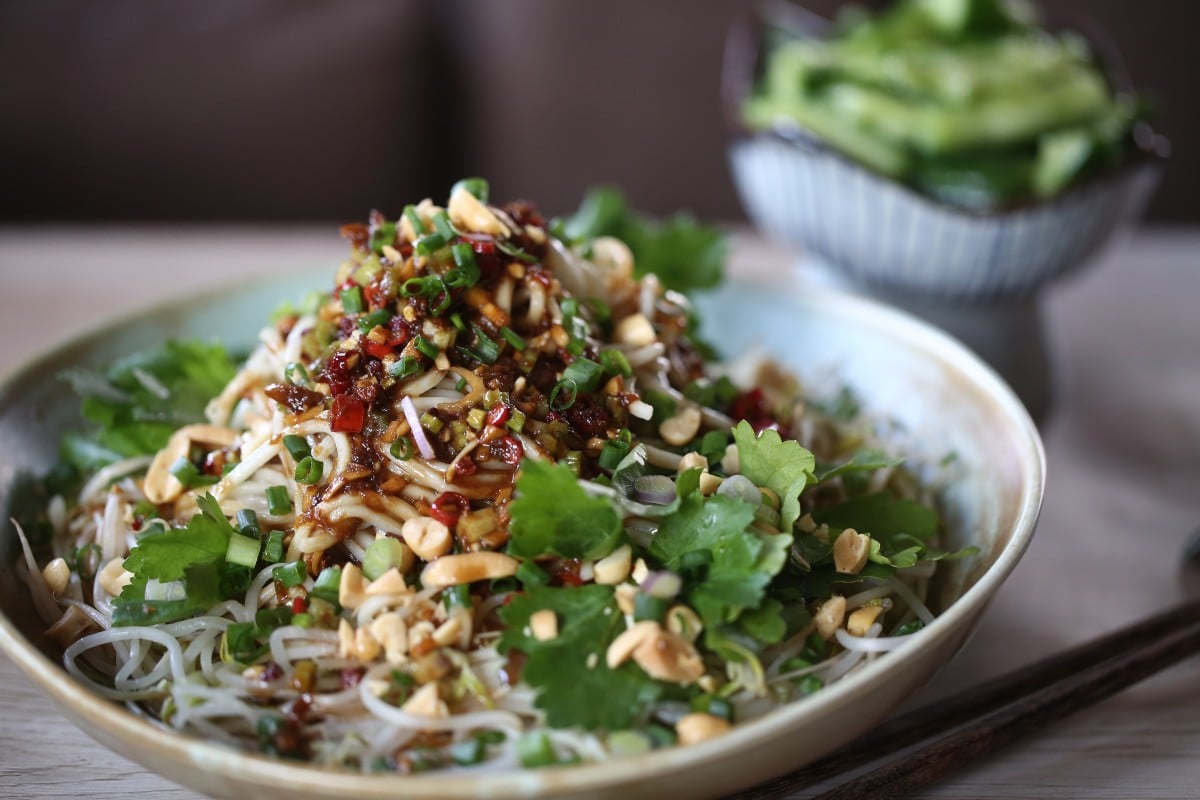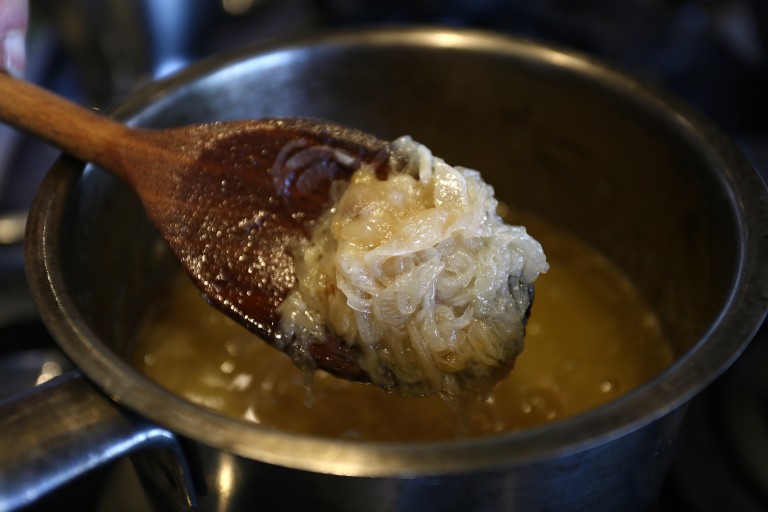
This cold noodle dish requires a bit of preparation if you make your own Sichuan shallot and garlic chilli oil. One batch will last about three months at room temperature, or longer in the fridge. Once you have the oil on hand, it takes just a few minutes to make subsequent batches of cold noodles.
The chilli oil can be used for other dishes, too – it is a great condiment with plain meats, and a spoonful mixed with soy sauce and a little sugar to temper the heat is delicious on boiled or pan-fried dumplings. But if you find a brand of Sichuan shallot and garlic chilli oil (or something similar) that you like, use it instead.
This dish is vegan, but vegetarians can add a shredded egg crepe and omnivores can add strips of chicken or pork.
Make the chilli oil. Loosely wrap the nutmeg in a paper towel, place it on a cutting board and give it a firm whack with the flat side of a metal meat mallet (or a sterilised hammer) to break it into several pieces – the paper towel prevents the pieces from flying all over the place. Put the pieces in a medium-size pan.
Wrap the cassia bark in the paper towel and hit it more lightly with the mallet to break it into several pieces, then gently hit the cardamom pods to break them open. Add the cassia bark and cardamom to the pan.
In a mortar, lightly crush the black and white peppercorns before adding them to the pan with the bay leaves, star anise, cumin seeds and fennel seeds.
Place the pan over a medium flame to toast the spices, shaking the pan and stirring the ingredients almost constantly until they are fragrant and start to darken slightly. Turn off the flame.
Thinly slice the ginger and cut the spring onions into 1cm (7/16 in) pieces, then put them in the pan and add the fermented black beans and the cooking oil. Heat over a medium flame until the oil starts sizzling, then lower the heat. Cook at a low sizzle for 15 minutes, stirring occasionally.
While the spices are cooking, thinly slice the garlic and shallots.
After cooking the spices, pour the spiced oil through a mesh sieve into a second medium-sized pan, to strain out the solids.

Add the garlic and shallots to the spiced oil and place the pan over a medium flame. Heat until the oil is sizzling, then reduce the flame to medium-low. Cook at a low sizzle for about 15 minutes, or until the shallots and garlic are medium golden.

While the garlic and shallots are cooking, thinly slice the dried chillies, shaking out and discarding as many seeds as possible. Put the dried chillies, Sichuan peppercorns and chilli flakes in a metal bowl.

As soon as the garlic and shallots are medium golden, add the dried chillies, Sichuan peppercorns and chilli flakes and stir well. Cook for one minute, then pour all the ingredients into the metal bowl. (The metal will absorb the heat of the oil and help it cool faster.) Leave to cool to room temperature, then transfer to a clean jar with a tight-fitting lid.
To make the Sichuan cold noodles, cut the bird’s-eye chillies into thin rings, shaking out and discarding the seeds as you go. Mince the spring onions and cut the stalks of the Chinese celery into 2.5cm (1in) lengths. Reserve the celery leaves for the garnish. Finely mince the garlic. Grate the peeled ginger (preferably using a ceramic oroshigane, or Japanese grater) until you have 10g (⅓oz).
Put the garlic and ginger in a bowl and add the soy sauce, vinegar and sugar. Stir until the sugar is dissolved. Stir in 50g (1¾oz) of the solids and oil from the shallot and garlic chilli oil, then mix in the bird’s-eye chillies. Taste the sauce for seasonings and adjust, if necessary. If it's too spicy, mix in more sugar.
Bring a large pot of water to the boil and add the noodles. Cook until al dente, then scoop them out with a large mesh strainer, place in a colander and rinse with cold water. Drizzle the sesame oil over the noodles and mix well, so the noodles are lightly coated.
Add the bean sprouts to the boiling water, cook for 15 seconds, then strain through a colander.
Put the noodles, bean sprouts and Chinese celery pieces in a large bowl, add one-third to one-half of the sauce and mix well; the sauce should lightly coat the ingredients. Divide the ingredients between four bowls and top each portion with more sauce, and a sprinkle of peanuts and sesame seeds. Garnish with the celery leaves before serving.
Any leftover sauce will keep in the fridge for about two weeks.